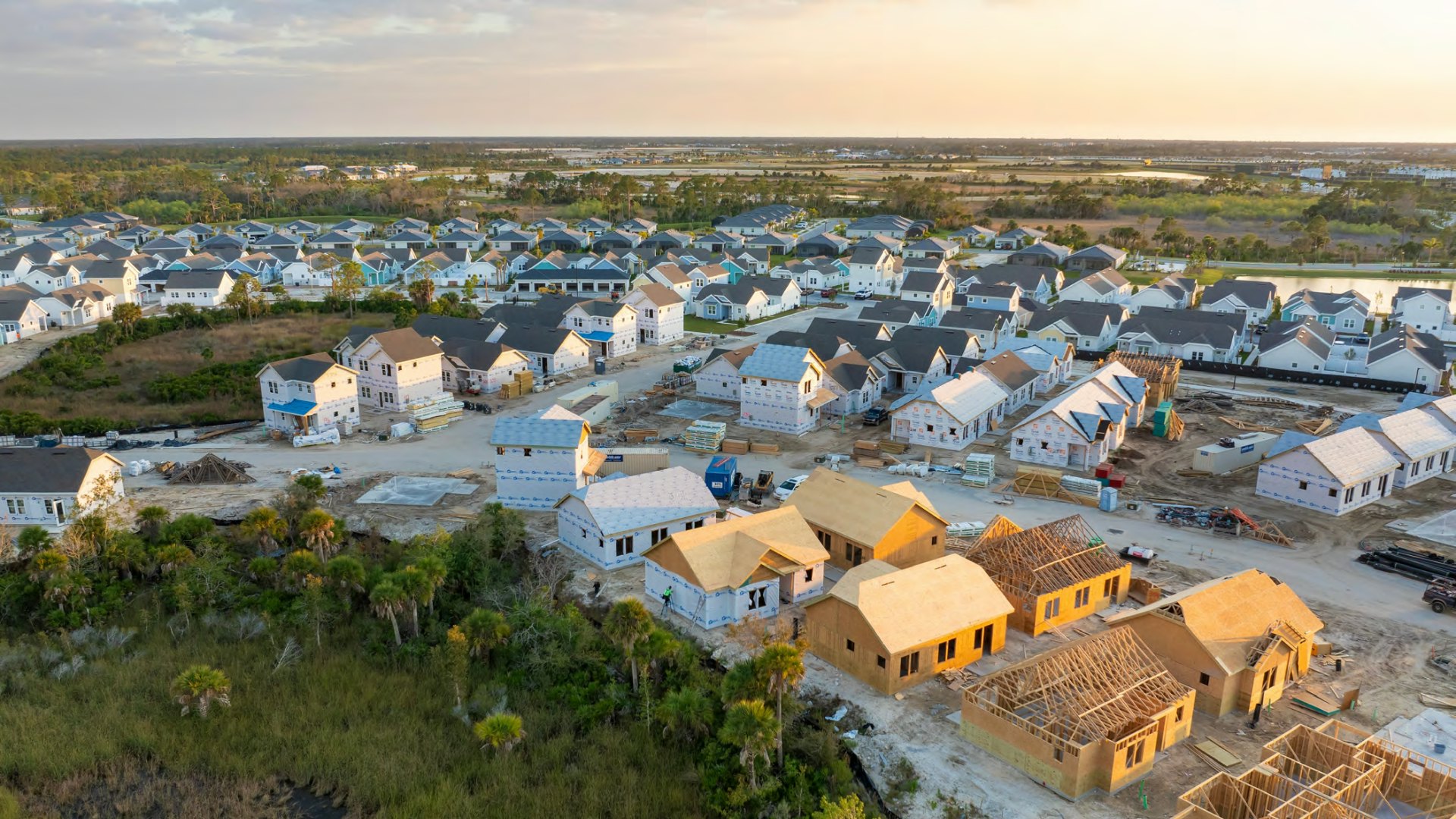The hurdles mid-sized cities in the Lone Star State are facing to prepare students for the next generation of jobs
This is the first piece in a two-part series, The Texas Story, a special report from the George W. Bush Institute on paths to opportunity for young people in select Texas regions. Are young Texans on track for prosperous, self-determined lives? How do we know? And what might the outcomes mean for students and communities in other states? In a prior series last year, we explored these questions in Dallas, Houston and Austin. This fall, we visit two smaller Texas cities — Midland and Longview. This piece examines the challenges that school districts in the two cities face in preparing students for the modern workforce.
Towering metropolitan populations dominate the storyline of modern Texas. The 13 largest cities in the United States include five from Texas: Houston, San Antonio, Dallas, Austin and Fort Worth. The Texas Triangle, a megaregion in the middle of the state that includes those five main urban centers, is home to nearly 21 million of the state’s 28.6 million residents. The rest of the state’s 7.5 million residents — still greater than the population of 30 smaller states — live in rural areas, small towns and moderately sized cities.
The foundation of the state — and often its mythic image — rests in the vast stretches of land far from the office towers of Texas’ urban and suburban skylines. No regions of the state capture more of that heritage than West Texas and East Texas. They provided the oil, cattle, timber and cotton that allowed a frontier state to eventually develop an economy that would rank ninth in the world if Texas were a nation.
We chose Midland and Longview, two longstanding Texas communities that help anchor West and East Texas, respectively, for a closer look at opportunity in Texas beyond the state’s urban core. Both cities sit in growing counties in our fast-growing state, according to the 2020 Census. (Midland County grew over 24% over the last decade, Gregg County grew a more modest 2%.) They are also blessed with young people. Will those young people stay in their cities? Will they be well prepared for opportunities?
Midland sits 325 miles west from Dallas/Fort Worth in the center of the oil-rich Permian Basin. The city’s thriving energy industry long has attracted pioneering entrepreneurs and educated professionals to its windswept plains. None have been more prominent than a young George H.W. Bush, and his wife Barbara Bush, who arrived after World War II in search of opportunity.
Midland continues to attract college-educated engineers, geologists and executives, at least more so than neighboring Odessa. Yet the boom-and-bust cycles that roil the energy industry require Permian Basin residents to retool themselves — or become unemployed — when downturns hit.
Longview became an industrial hub in the Piney Woods of Texas after long-ago becoming a center for shipping cotton and timber. The East Texas town also capitalized on the discovery of the nearby East Texas Oil Field in the 1930s. Fortunes were made from that field, benefitting towns and families across East Texas.
Today, Longview houses a number of manufacturing operations, but only about 22% of the town’s population has a bachelor’s degree or higher. By contrast, the state average for a bachelor’s degree or higher is almost 31%.
These communities face the same question that big cities like Dallas, Houston and Austin encounter with their school districts: How do they best prepare students for a meaningful life in the modern workforce?
Towns like Midland, with its 176,000 people, and Longview, with its 82,000 people, need to grow their own talent to become their communities’ next teachers, doctors and entrepreneurs. Big cities have more people moving in, but the futures of Midland and Longview are tied to how well they can prepare their young people for opportunities in adulthood.
This urban-rural dynamic plays itself out across America, no matter a state’s size. As people flock to cities, what happens to the communities they leave behind? What happens to their workers, their families, their children? What becomes of their institutions, not the least of which are their schools? Look at any state in the union, and this story applies.
What data says about Midland ISD and Longview ISD
As the energy capital of the Permian Basin, Midland is a major force in world energy markets. As of June 2022, the Dallas Federal Reserve Bank reports, the Permian Basin produced almost 44% of the nation’s oil and about 17% of its natural gas.
The production is vital to the economies of Midland and the nation. Yet the roller coaster nature of the energy industry means that Midland’s schools must continually produce innovative students who can help their community adapt to financial booms-and-busts.
Young families once knew they could place their children in a Midland public school and their education would ready them for the world. In the ensuing decades, the community continued to provide a decent education at a below-average cost.
Now, student performance in the Midland Independent School District shows something different.
In the 2018-2019 school year, the Texas Education Agency gave Midland ISD a C in the agency’s A-F annual rankings of public schools. The district earned only mediocre marks for overall student achievement on the State of Texas Assessments of Academic Readiness exams. Its students demonstrated marginal year-over-year progress on the annual tests. And the state ranked twice as many Midland ISD schools as failing compared to the previous year.
Fast forward three years, Midland ISD students improved on the 2022 STAAR exams. As a whole, the district of 26,387 students moved from a C rating in 2019, the last year TEA handed out letter grades, to a B for the 2021-2022 school year. The progress is encouraging, especially given the pandemic’s impact on students.
Similarly, Midland ISD educators should celebrate that their students improved in reading in grades three through eight. And across all subgroups of students, whether by race, income or English proficiency, the district met the state’s target for showing growth on English language arts/reading exams.
Still, Midland’s overall B rating sits on the border between a B and a C. The district barely scooted by with a numerical score of 80 out of 100 to claim that B grade. In part, that is because only 42% of Midland students earned a “meets” mark on the state’s expectations on all STAAR exams, trailing the Texas state average of 48%.
The “meets” mark is critical because it means that students are able, as TEA reports, to “generally demonstrate the ability to think critically and apply grade-level knowledge and skills in familiar contexts.” In Midland’s case, 58% of the district’s students are not showing they can apply their knowledge in a way that is appropriate for their grade level.
Longview ISD is also showing some signs of improvement, but not all of the East Texas district’s metrics are encouraging. Like Midland ISD, Longview can’t claim victory.
The big headline is that the district of 8,223 students earned a coveted A from the state for the 2021-2022 academic year. That top mark was up from a B in 2018-2019. Equally encouraging is that Longview students beat the state average for meeting the state’s standards on all STAAR exams except for social studies.
Of course, trumping a fairly low state average is not a major victory. It is particularly troubling that only 44% of Longview ISD’s Black students, who make up 34.5% of the Longview student body, met the state’s standards on all STAAR tests. Their passing rate trails the average passing rate for all Longview ISD students by 10 points.
While it is good that Longview earned an A rating, an A rating may not mean an A experience for all of a district’s students. And Midland’s B rating is a positive sign of growth, but it also does not mean a B experience for every student.
As we saw in our study of Dallas, Austin and Houston, strong high school graduation rates do not guarantee future success.
The charts below illustrate the challenge facing young people in Midland County and Gregg County, in which Longview is located. Third-grade reading scores show gaps by race and ethnicity — gaps that appear to be largely eliminated when we consider high school graduation rates across those same racial groups. Maddeningly, however, those gaps reappear across higher education attainment and wage measures.
A proxy graduate profile shows that many students were well behind on reading in third grade and math in eighth grade, but a high percentage of students graduated from high school. This begs the question, were they truly prepared for opportunity and their next step, or did we set them up to fail by passing them along in the system?
In our next article, we will examine how the governance and leadership of these two mid-size districts impacts student learning, how well the districts use innovations and fundamentals to improve student outcomes, and the degree to which the community ecosystems support and drive school progress. We also will provide recommendations on how Midland ISD and Longview ISD can best deal with the realities they confront.
For now, we conclude with the voices of students who explain their experiences in Midland and Longview. Their voices are the most important ones, after all. Their opportunity to enjoy a meaningful, purposeful life is at stake.

































